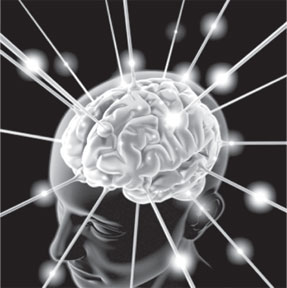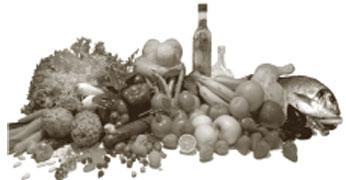
Vital breakthroughs mark year of medical research
TWIN BENEFIT: Treating discordant couples with antiretroviral drugs
provides double benefit - reducing the viral load in individual patients
while simultaneously cutting transmission rates.
The journal Science has lauded an eye-opening HIV study, known as
HPTN 052, as the most important scientific breakthrough of 2011.
This clinical trial demonstrated that people infected with HIV are 96
per cent less likely to transmit the virus to their partners if they
take antiretroviral drugs (ARVs).
According to a release from Science, the findings end a long-standing
debate over whether ARVs could provide a double benefit by treating the
virus in individual patients while simultaneously cutting transmission
rates.
It's now clear that the drugs can provide treatment as well as
prevention when it comes to HIV, researchers agree.
About 1,800 heterosexual couples from nine different countries:
Brazil, India, Thailand, the United States, Botswana, Kenya, Malawi,
South Africa and Zimbabwe were enrolled for the study. Each
participating couple included one partner with an HIV infection.
The researchers administered ARVs to half of those HIV-infected
individuals immediately and waited for the other half of the infected
participants to develop CD4 counts below 250 - indicative of severe
immune damage - before offering treatment. (A CD4 count below 200
indicates AIDS.)
Then, earlier this year, four years before the study was officially
scheduled to end, an independent monitoring board decided that all
infected study participants should receive ARVs at once.
The board members had seen the dramatic effects of early ARV
treatment on HIV transmission rates, and they recommended that the
trial's findings be made public as soon as possible. The results were
published on August 11 in the New England Journal of Medicine
"This [HPTN 052 trial] does not mean that treating people alone will
end an epidemic," said Science news correspondent Jon Cohen, who wrote
about the trial for Science's Breakthrough of the Year feature. "But,
combined with three other major biomedical preventions that have proven
their worth in large clinical studies since 2005, many researchers now
believe it is possible to break the back of the epidemic in specific
locales with the right package of interventions."
"Most everyone expected that reducing the amount of virus in a person
would somewhat reduce infectiousness," explained Jon Cohen. "What was
surprising was the magnitude of protection and then the impact the
results had among HIV/AIDS researchers, advocates and policy-makers."
These findings have added important momentum to a movement, already
underway, that promotes the ongoing treatment of HIV to reduce viral
loads in communities and could possibly eliminate HIV/AIDS epidemics in
some countries. But there are many problems in implementing it on a
large-scale.
Still, some researchers consider HPTN 052 a "game-changer" because of
its near-100 percent efficacy in reducing HIV transmission rates. And,
indeed, it has already sprung many clinicians and policy-makers into
action. For all these reasons, Science spotlights the HPTN 052 study as
the 2011 Breakthrough of the Year.
Science's and its publisher, AAAS, the non-profit science society,
have identified other groundbreaking scientific accomplishments during
2011.
Unraveling Human Origins: Studying the genetic code of both ancient
and modern human beings, researchers discovered that many humans still
carry DNA variants inherited from archaic humans, such as the mysterious
Denisovans in Asia and still-unidentified ancestors in Africa.
One study this year revealed how archaic humans likely shaped our
modern immune systems, and an analysis of Australopithecus sediba
fossils in South Africa showed that the ancient hominin possessed both
primitive and Homo-like traits.
Getting to Know the Microbiome: Research into the countless microbes
that dwell in the human gut demonstrated that everyone has a dominant
bacterium leading the gang in their digestive tract: Bacteroides,
Prevotella or Ruminococcus. Follow-up studies revealed that one of these
bacteria thrives on a high-protein diet while another prefers vegetarian
fare.
These findings and more helped to clarify the interplay between diet
and microbes in nutrition and disease.
A Promising Malaria Vaccine: Early results of the clinical trial of a
malaria vaccine, known as RTS,S, provided a shot in the arm to malaria
vaccine research.
The ongoing trial, which has enrolled more than 15,000 children from
seven African countries, reassured malaria researchers, who are used to
bitter disappointment, that discovering a malaria vaccine remains
possible.
Clearing Senescent Cells: Experiments have revealed that clearing
senescent cells (those that have stopped dividing) from the bodies of
mice can delay the onset of age-related symptoms.
Mice whose bodies were cleared of these loitering cells didn't live
longer than their untreated cage-mates - but they did seem to live
better, which provided researchers with some hope that banishing
senescent cells might also prolong our golden years.
Courtesy: The Hindu
How the brain merges sights and sounds
 In order to get a better picture of our surroundings, the brain has
to integrate information from different senses, but how does it know
which signals to combine? New research involving scientists from the Max
Planck Institute for Biological Cybernetics, University of Oxford, and
the University of Bielefeld has demonstrated that humans exploit the
correlation between the temporal structures of signals to decide which
of them to combine and which to keep segregated. In order to get a better picture of our surroundings, the brain has
to integrate information from different senses, but how does it know
which signals to combine? New research involving scientists from the Max
Planck Institute for Biological Cybernetics, University of Oxford, and
the University of Bielefeld has demonstrated that humans exploit the
correlation between the temporal structures of signals to decide which
of them to combine and which to keep segregated.
Multisensory signals originating from the same distal event are often
similar in nature. Think of fireworks on New Year's Eve, an object
falling and bouncing on the floor, or the footsteps of a person walking
down the street.
The temporal structures of such visual and auditory events are always
almost overlapping (i.e., they correlate), and we often effortlessly
assume an underlying unity between our visual and auditory experiences.
In fact, the similarity of temporal structure of multiple unisensory
signals, rather than merely their temporal coincidence as it has been
previously thought, provides a potentially powerful cue for the brain to
determine whether or not multiple sensory signals have a common cause.
Cesare Parise from the Max Planck Institute for Biological Cybernetics
set out to examine the role of signal correlation in multisensory
integration by asking people to localize a stream of beeps and flashes.
Participants seated in front of a large screen where sounds (streams
of noise bursts) and images (streams blurred blobs) were presented from
different spatial locations. On some trials only visual or auditory
stimuli were presented, while on other trials visual and auditory
stimuli were presented in combination.
Critically, on combined audiovisual trials, the temporal structure of
the visual and auditory stimuli could either be correlated or not.
Participants were required to report the spatial position of such
stimuli by moving a cursor controlled by a graphic tablet.
In line with previous studies, participants were more precise when
the auditory and visual streams were presented together than when they
were presented in isolation.
Notably, precision was even higher when auditory and visual streams
were correlated, and closely approached the theoretical maximum.
These results demonstrate that humans optimally combine multiple
sensory signals only when they correlate in time. Previous research has
demonstrated that optimal integration only occurs when the brain is sure
that the signals have a common underlying cause. These results therefore
demonstrate that the brain uses the statistical correlation between the
sensory signals to infer whether they have a common physical cause, and
hence whether they provide redundant information that should be
integrated.
The researchers suggest the brain has evolved this ability to combine
potentially related information from different senses so it can
effectively pick its way through the noisy environments of everyday
life.
"It's why at a noisy cocktail party you can tell who is speaking with
which voice," says Parise. "Our eyes and ears are continually taking in
sensory information and our brains make sense of it all by merging
together sights and sounds with similar temporal structures."
In spite of being a pervasive aspect of sensory processing, little is
known about the low-level statistical determinants of multisensory
integration for signals with complex dynamic temporal patterns.
This research highlights the role of a key organizational principle
for multisensory perceptual grouping. What at first glance appears to be
a logical fallacy, namely inferring causation from correlation, turns
out to be the rule in perception.
- Healthnews
Shedding new light on medicinal benefits of plants
 Scientists from institutions around the world have collaborated to
develop new resources poised to unlock yet another door in the hidden
garden of medicinally important compounds found in plants. The resources
were developed by the Medicinal Plant Consortium (MPC) led by Joe
Chappell, Dean DellaPenna and Sarah O'Connor. They grew out of a $6
million initiative from the National Institutes of Health (NIH) to study
how plants produce the rich diversity of chemical compounds, some of
which are medicinally important. Scientists from institutions around the world have collaborated to
develop new resources poised to unlock yet another door in the hidden
garden of medicinally important compounds found in plants. The resources
were developed by the Medicinal Plant Consortium (MPC) led by Joe
Chappell, Dean DellaPenna and Sarah O'Connor. They grew out of a $6
million initiative from the National Institutes of Health (NIH) to study
how plants produce the rich diversity of chemical compounds, some of
which are medicinally important.
"Our major goal in this project has been to capture the genetic
blueprints of medicinal plants for the advancement of drug discovery and
development," said Chappell, project coordinator for the MPC. "Most
people are familiar with the natural products we derive from plants,"
Chappell added.
"These include the delightful fragrances that go into perfumes,
soaps, household cleaning products and more. Just as the sensory
properties of plants interact with and trigger your sense of smell,
plants' natural compounds can target and cause a reaction within your
body. This gives them tremendous pharmaceutical potential." The MPC
project includes participants from Michigan State, Iowa State
University, the University of Mississippi, Purdue University, Texas A&M
University, MIT, and the John Innes Centre, in addition to UK.
The associated researchers represent a broad spectrum of expertise
from plant biology and systematics to analytical chemistry, genetics and
molecular biology, and drug development from natural products. Some
well-known medicines have come from plants. For instance, the foxglove
plant gives us the cardiac muscle stimulant digoxin, and the periwinkle
plant offers a source for the widely used chemotherapy drugs vincristine
and vinblastine. These and many other medicinal plants, often commonly
found in household gardens and flower boxes, represent cornucopias of
compounds ripe for discovering and developing diverse medicinal
applications. "The current understanding of the molecules and genes
involved in the formation of plant-derived medicinal compounds is very
incomplete.
However, the ability to conduct genome-wide studies of model plant
species has resulted in an explosive increase in our knowledge of and
capacity to understand the biological processes," added O'Connor, also
an MPC co-project coordinator. During this two-year project researchers
from two consortia set out to develop a collection of data that would
aid in understanding how plants make chemicals, a process called
biosynthesis. This knowledge ultimately could make it possible to
engineer plants to produce larger quantities of medicinally useful
compounds as well as different versions with other therapeutic
potential.
To develop the resources, the researchers studied the genes and
chemical composition of 14 plants known for their medicinal properties
or compounds with biological activity. These included plants such as
foxglove, ginseng, and periwinkle. Altogether, these efforts are now
providing a rich toolbox for researchers to discover the means for how
nature's chemical diversity is created, thus empowering efforts to
uncover new drug candidates and increase the efficacy of existing ones.
The work of the MPC included obtaining materials for all the
medicinal plants used in this study. The MPC then determined the plants'
chemical profiles and obtained their genetic blueprints to study how
genes control the various chemical compositions. "This work offers a
valuable data resource for understanding the genes, enzymes and complex
processes responsible for the biosynthesis of important plant-derived
drugs," said Warren Jones, who manages this and other research grants in
biotechnology at NIH's National Institute of General Medical Sciences,
through which the ARRA funds were provided. "The collaborative effort
should greatly contribute to our ability to understand and exploit the
rich biochemistry found in plants."
- MediLexicon
Diet patterns may keep brain from shrinking
People with diets high in several vitamins or in omega 3 fatty acids
are less likely to have the brain shrinkage associated with Alzheimer's
disease than people whose diets are not high in those nutrients,
according to a new study published in a medical journal on Neurology.
 Those with diets high in omega 3 fatty acids and in vitamins C, D, E
and the B vitamins also had higher scores on mental thinking tests than
people with diets low in those nutrients. These omega 3 fatty acids and
vitamin D are primarily found in fish. Those with diets high in omega 3 fatty acids and in vitamins C, D, E
and the B vitamins also had higher scores on mental thinking tests than
people with diets low in those nutrients. These omega 3 fatty acids and
vitamin D are primarily found in fish.
The B vitamins and antioxidants C and E are primarily found in fruits
and vegetables.In another finding, the study showed that people with
diets high in trans fats were more likely to have brain shrinkage and
lower scores on the thinking and memory tests than people with diets low
in trans fats. Trans fats are primarily found in packaged, fast, fried
and frozen food, baked foods and margarine spreads.The study involved
104 people with an average age of 87 and very few risk factors for
memory and thinking problems. Blood tests were used to determine the
levels of various nutrients present in the blood of each participant.
All of the participants also took tests of their memory and thinking
skills. A total of 42 of the participants had MRI scans to measure their
brain volume.Overall, the participants had good nutritional status, but
seven percent were deficient in vitamin B12 and 25 percent were
deficient in vitamin D.Study author Gene Bowman, of Oregon Health &
Science University in Portland said that the nutrient biomarkers in the
blood accounted for a significant amount of the variation in both brain
volume and thinking and memory scores.
For the thinking and memory scores, the nutrient biomarkers accounted
for 17 percent of the variation in the scores.
Other factors such as age, number of years of education and high
blood pressure accounted for 46 percent of the variation. For brain
volume, the nutrient biomarkers accounted for 37 percent of the
variation."These results need to be confirmed, but obviously it is very
exciting to think that people could potentially stop their brains from
shrinking and keep them sharp by adjusting their diet," Bowman said.The
study was the first to use nutrient biomarkers in the blood to analyze
the effect of diet on memory and thinking skills and brain volume.
Previous studies have looked at only one or a few nutrients at a time or
have used questionnaires to assess people's diet.
But questionnaires rely on people's memory of their diet, and they
also do not account for how much of the nutrients are absorbed by the
body, which can be an issue in the elderly.
- MNT
Why some older people lose their memory
New research links 'silent strokes,' or small spots of dead brain
cells, found in about one out of four older adults to memory loss in the
elderly.
"The new aspect of this study of memory loss in the elderly is that
it examines silent strokes and hippocampal shrinkage simultaneously,"
said study author Adam M. Brickman, of the Taub Institute for Research
on Alzheimer's Disease and the Aging Brain at Columbia University.
For the study, a group of 658 people ages 65 and older and free of
dementia were given MRI brain scans. Participants also underwent tests
that measured their memory, language, speed at processing information
and visual perception.
A total of 174 of the participants had silent strokes.The study found
people with silent strokes scored somewhat worse on memory tests than
those without silent strokes. This was true whether or not people had a
small hippocampus, which is the memory center of the brain."
Given that conditions like Alzheimer's disease are defined mainly by
memory problems, our results may lead to further insight into what
causes symptoms and the development of new interventions for prevention.
Since silent strokes and the volume of the hippocampus appeared to be
associated with memory loss separately in our study, our results also
support stroke prevention as a means for staving off memory problems,"
said Brickman.
- Sciencedaily.com
|

